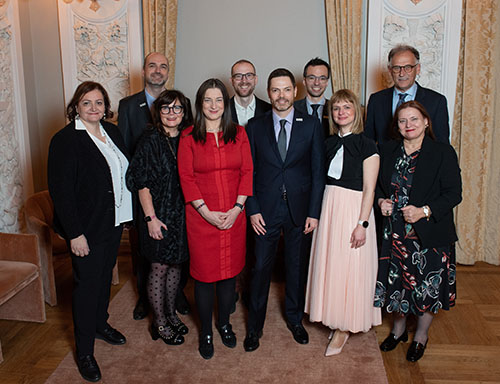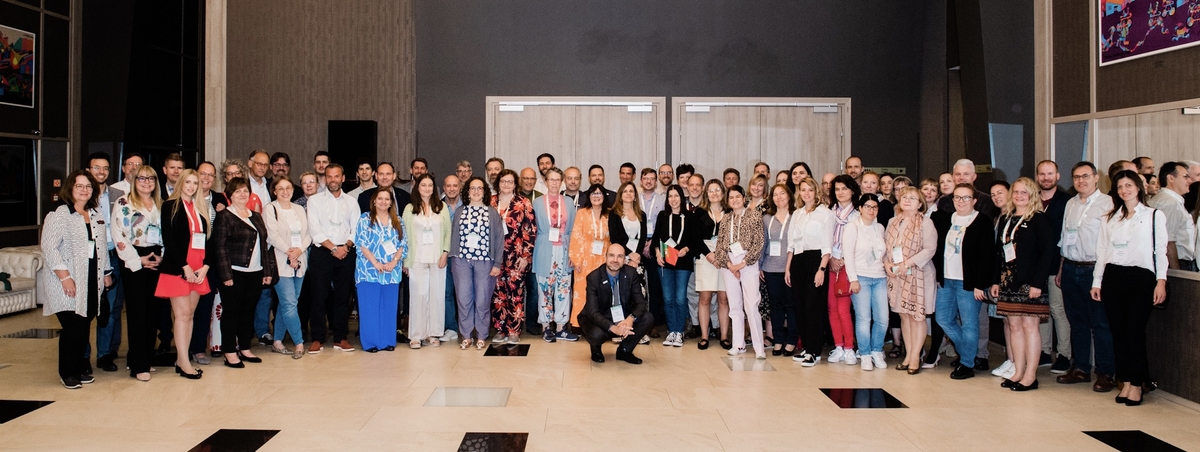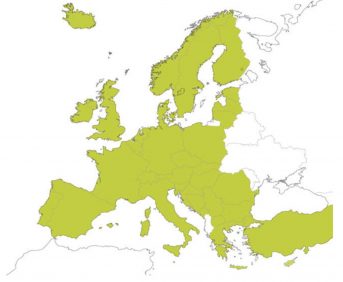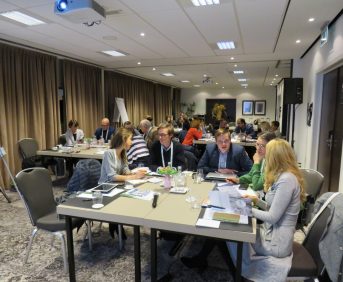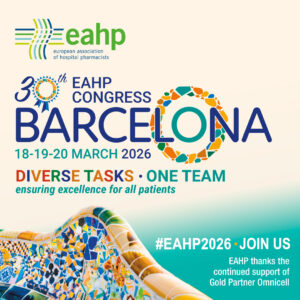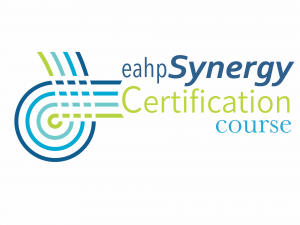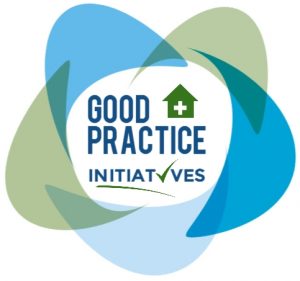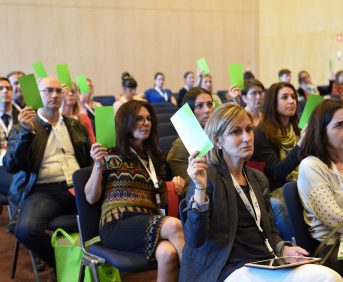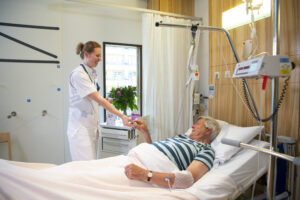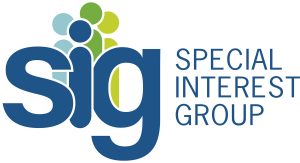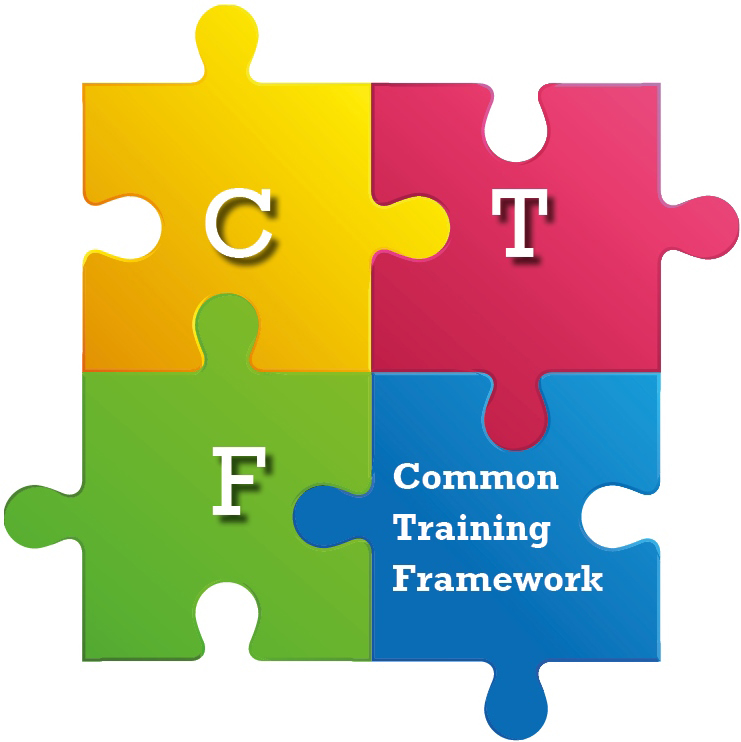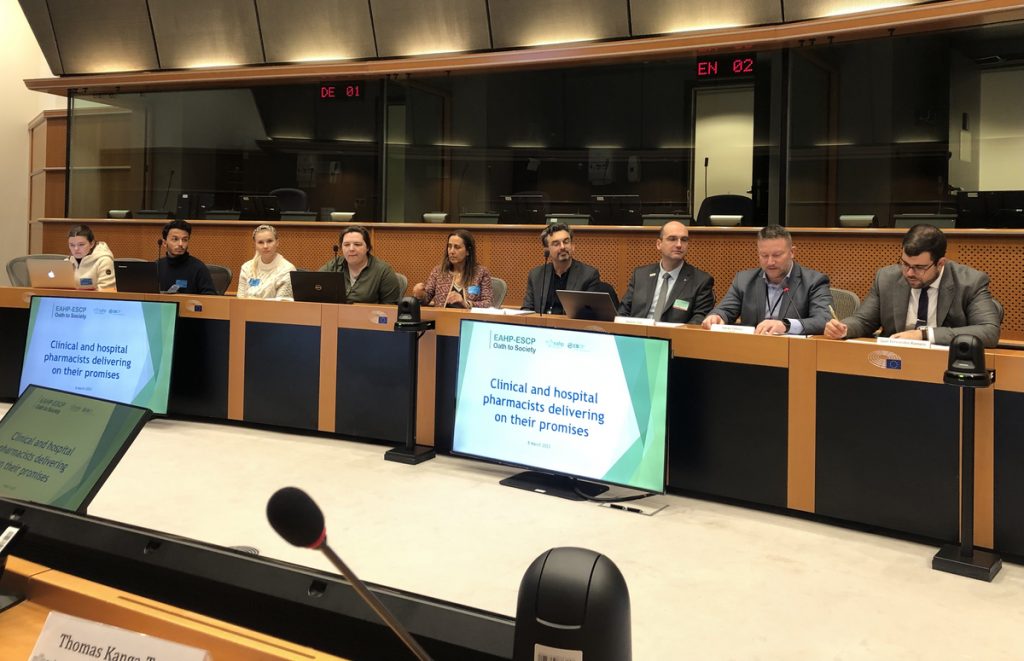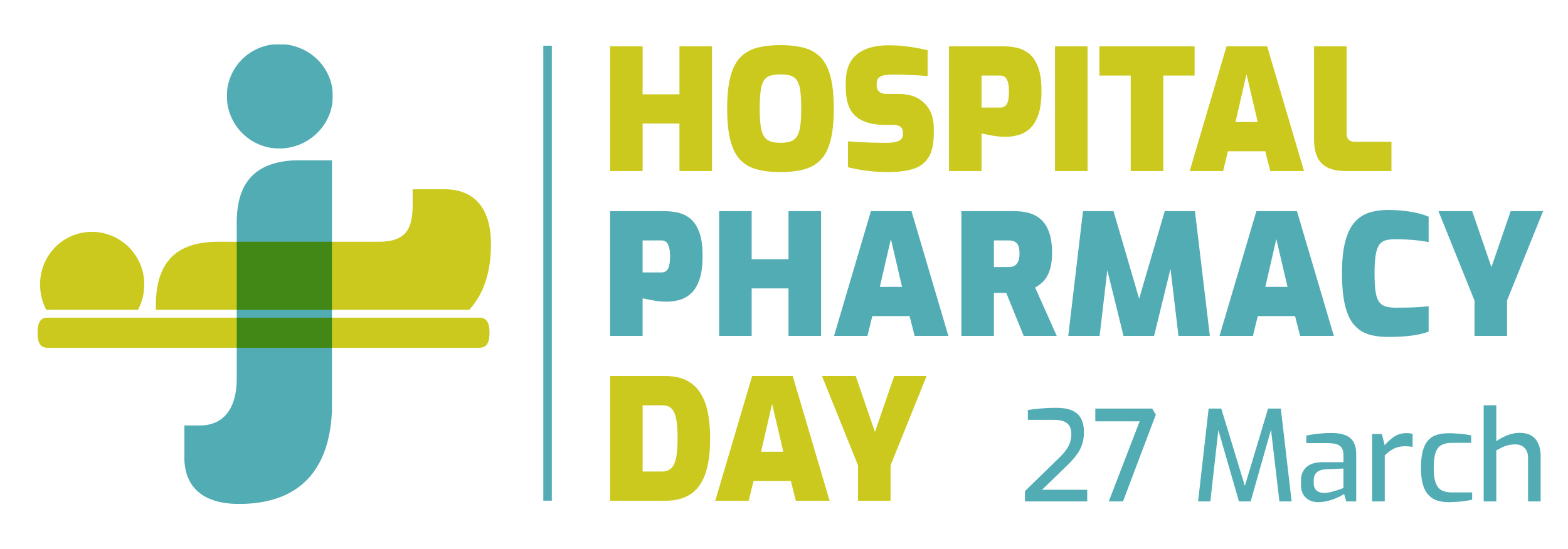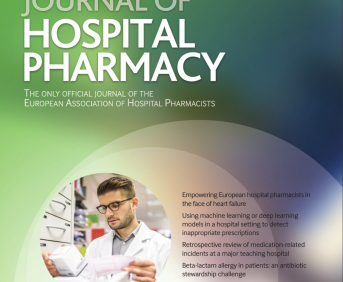SESAME QUIZ: A PLAYFUL ONLINE QUESTIONNAIRE TO ASSESS PATIENTS’ KNOWLEDGE ABOUT SJOGREN’S SYNDROME
Pdf

European Statement
Education and Research
Author(s)
Charlotte Ménage-Anjuère, Rakiba Belkir, Elisabeth Bergé, Audrey Decottignies, André Rieutord, Xavier Mariette, Raphaèle Séror
Why was it done?
We needed to assess the impact of our patient education program on Sjogren’s syndrome (SESAME) in order to continuously improve it.
What was done?
A playful online questionnaire was designed and implemented to assess patients’ knowledge about Sjogren’s syndrome.
How was it done?
A interprofessional team (3 rheumatologists, 3 pharmacists) and a 4-patient group who participated in the education program together proceeded to the questionnaire design: 1) definition of a competency framework for patients with Sjogren’s syndrome; 2) from literature review, identification of quality requirements for a questionnaire (scientific quality, opportunity to interact, means of expression, logical chaining of questions, simplicity, utility, shortness, bias prevention, playfulness, variety, online diffusion). To fulfill these criteria, we used a clear vocabulary and concise questions, included open-ended questions on patient experience, focused on the artwork, randomized the order of answer choices, and shared the questionnaire online. Once the SESAME quiz was established, a scoring system was defined by the expert group. Face validity, feasibility and reproducibility were assessed to validate the questionnaire. 25 patients were contacted to complete the questionnaire twice. Patients also evaluated the content, structure and feasibility using 12 items (understandable language, unambiguous sentences, length of the questionnaire, difficulty, web access). Reproducibility was calculated using intraclass correlation coefficient (ICC) on patient answers separated by 48 hours.
What has been achieved?
The questionnaire includes 28 questions divided into 4 parts: Sjogren’s signs, Sjogren’s causes, treatment, daily life with the disease. The 25 patients filled in the questionnaire twice (96% women, 54 years min-max[23;74], 4 years since the diagnosis min-max[1;20]). The questionnaire was filled in from a computer (n=38), a tablet (n=3) or a smartphone (n=9). The average response time was 19 minutes. The median score was 34 points min-max[22;46] out of 50. 18 patients evaluated the questionnaire. 15 patients or more regarded its content, organization and feasibility as “very good”. 5 patients found it difficult. The reproducibility was very high (total ICC = 0.87 IC95% [0.74-0.94], ICC on each part between 0.61 et 0.87).
What next?
The SESAME quiz is now freely available (https://etp-rhumato.typeform.com/to/qsVhR1) and all the Hospital centers caring for Sjogren patients can use it for their follow up.
INVOLVING PATIENTS IN A WORKSHOP FOCUSED ON COMMUNICATION SKILLS: A PROOF OF CONCEPT OF EXPERIENTIAL TRAINING FOR RESIDENTS IN HOSPITAL PHARMACY
Pdf

European Statement
Education and Research
Author(s)
Caroline Hache, Stéphane Honoré, Guillaume Hache
Why was it done?
The development of clinical pharmacy allows pharmacists to take patient-centered roles and responsibilities. However, patient-centered care requires a specific set of skills and training, such as patient-focused communication and conducting structured interviews. Thus, improvement of pharmacist-patient communication may lead to better clinical outcomes.
What was done?
We developed a workshop involving patients within the training programme of residents in hospital pharmacy. The workshop focused on communication skills needed to improve the quality and effectiveness of a pharmaceutical interview.
How was it done?
The workshop was developed jointly by two senior clinical pharmacists and a lecturer in education and communication science. The learning process integrated: working on participants’ perception of pharmacists-patient communication, didactic learning, training activities and evaluation. The assessment of the learning effect was performed by self-, peers-, and patient-scored charts. Patients’ feedback during the training activities and assessments was highlighted as the cornerstone of the learning process.
What has been achieved?
First, we built a competency chart on communication skills needed to perform a structured pharmaceutical interview. This tool has been validated by the patients and well accepted by the learners. It was used to assess the learning effect of the workshop, and may serve as a guide for the continuous development of junior practitioners. Secondly, the workshop has actually been implemented, with both the learners and patients expressing a high general acceptance and satisfaction. Finally, preliminary results show a learning effect assessed by both peers and patients.
What next?
The involvement of patients needs to be further expanded to the training programmes of undergraduate students, residents and clinical pharmacists. A future action planned is to develop a model with the French Society of Clinical Pharmacy (SFPC) for a national systematic training module: “Improving pharmaceutical interviews’ performance through effective communication”, involving patients.
IMPLEMENTATION OF GUIDELINES FOR THE ACTIVATION OF EFFECTIVE ANTIBIOTICS’ STEWARDSHIP TEAM IN GREEK HOSPITALS – THE ROLE OF HOSPITAL PHARMACIST
Pdf

European Statement
Clinical Pharmacy Services
Author(s)
Antonios Markogiannakis, Georgios Pegkas, Calliope Allagianni, Stavroula Efstathiou, Despoina Makridaki
Why was it done?
The term of AST has been introduced in Greek legislation since 2014 and should become the driving force to optimize antimicrobial therapy, especially for the protected antibiotics (PA): carbapenems, colistin and tigecycline. Unfortunately Greece ranks first in Europe in the consumption of the mentioned PA in hospitals, consequently the activation of AST constitutes national priority. The existing law frame defines that AST consists of four key member physicians (experienced in infectious diseases) plus the hospital pharmacist as coordinator of the group. As the number of serving pharmacists in Greece remains critically low, very few hospitals have actually activated the AST. The Panhellenic Association of Hospital Pharmacists (PEFNI) decided to organize regional meetings to enhance the involvement of pharmacists by sharing the practice of experienced colleagues running antibiotic stewardship programs (ASP) in their hospitals since fall of 2016.
What was done?
We have described the sequential steps for the establishment of multidisciplinary Antibiotic Stewardship Team (AST) in Greek hospitals and prepared training material to increase involvement of hospital pharmacists.
How was it done?
We combined the strategies and procedures implemented in the three hospitals during last year, in a flowchart presenting the establishment, activation and feedback of the AST. We have developed an ASP for hospitals, with initial target to minimize the use of PA:. Functional options in each step have been described, making it flexible for the colleagues to selectively implement them in their hospitals. We also created specific educational material to use in regional meetings that PEFNI organizes.
What has been achieved?
The application of ASP and the education of hospital pharmacists as coordinators results in: • Reliable reporting of controlled use for the PA • Safer antimicrobial management practice • Economy on restricted pharmacotherapy budgets • Acknowledgement of the critical role of pharmacists by other healthcare professionals, the hospital manager and the authorities
What next?
• The basic flowchart can be broadened to include subsequent stewardship activities such as recording proper surveillance of more classes of antibiotics, assessment of antimicrobial surgical chemoprophylaxis and/or antifungal pharmacotherapy.
• Connection of local ASP reports to a national network for all hospitals will help towards the creation of a real-time antibiotics’ consumption database in Greece.
INNOVATIVE PROCUREMENT
European Statement
Selection, Procurement and Distribution
Author(s)
Alison Anastasi, Karl Farrugia
Why was it done?
This was done as a tender was being issued also for medicines that still had a patency and had no competition and the prices quoted for were higher than other international external reference prices. Thereby a new pricing reimbursement system was undertaken and items procured were studied intensively before choosing the right procurement model. The main point was thinking outside the box inducing interest in international companies who were willing to support and assist the innovative local systems by participating in the new systems leading to improved access and better value for money.
What was done?
In September 2016, a workshop and strategy meeting was organised at WHO Denmark to discuss global procurement strategy and share country practices. Malta was one of the facilitators and invited speakers. In the past years tendering was the main system for procurement. However, on having a thorough understanding of medicines and non-pharmaceuticals, market strategy, and patency other processes have been studied and adopted. The models involve negotiations, pay per use systems, and pay per performance models.
How was it done?
This was done by setting multidisciplinary teams within the hospitals and by having good research methodology skills. This led to smoothing the gaps between the actual horizon scanning, health technology assessments and final choice of procurement strategy. International liaison, partnership with the industry, and relevant focus groups with annual seminars made this possible as mixed experts met and gave their best shot at this new system. The fact that no one size fits all made procurement more interesting and from one cycle to the other there is a learned curve that brings successful results.
What has been achieved?
Malta achieved better competition, uninterrupted sourcing, investments and stable pricing with continuous yearly reductions. From negotiations of patented medicines Malta saved approximately 1.5-2 Million Euro per year since 2013. With respect pay per use systems such as the total knee replacements Malta gave a capped price and ended up paying half of what is used to pay and companies managed to bid for the set price. In renal dialysis the cycle involved payment per patient service thereby reducing wastage, storage, and ordering of consumables and this will render a cost saving of 5Million Euro throughout cycle. The new processes launched for multiple sclerosis will dictate that whoever reaches the cheapest price ranking will be used to start the patients clinically and the pay per cure cycle for Hepatitis C will lead to savings and complete eradication in five years time.
What next?
Malta is one of 6 small EU Member States so besides its size and geography there are other elements were it triggers the procurement department to think of innovative ways to treat our patients and as yet remaining sustainable. There are other projects in the pipeline however, Malta is sharing its good practice with the industry, with the WHO and other international fora so that certain elements are taken on board as standardised systems for equality of service and treatment in all countries.
IMPLEMENTATION OF THE FIRST MEDICINES INFORMATION SERVICE IN BELGIUM
Pdf

European Statement
Clinical Pharmacy Services
Author(s)
Elise Deyaert, Hilde Collier, Pieter-Jan Cortoos, Claudine Ligneel
Why was it done?
Medication errors are often caused by insufficient knowledge among healthcare professionals. Given limited clinical pharmacists’ presence on Belgian hospital wards, a pharmacy-led MIS can efficiently provide fast, accurate and objective medication-related information.
What was done?
We implemented the first Belgian Medicines Information Service (MIS) in our university hospital. In several countries, a MIS is common in most hospitals but until our project, no such MIS was available
in Belgian hospitals.
How was it done?
Best practices were researched through literature review and site visit at Charing Cross Hospital (London, UK). Secondly, in order to customize activities, all nurses and physicians were surveyed on medicines information needs. Our MIS was set up to centrally (1 dedicated pharmacist, phone number and e-mail address) receive medication-related questions from healthcare workers with the option to request additional clinical-pharmaceutical interventions (e.g. drug review). Implementation was accompanied by mailings, posters, business cards and presentations. All enquiries were registered in the MiDatabank® (UKMi National Medicines Information) and evaluated after 4 months, together with user satisfaction.
What has been achieved?
221 respondents (113 physicians, 103 nursing) to our survey found ‘drug administration/dosing’ (79.7%), interactions (69.6%) and ‘tablet crushing’ (49.7%) major problematic topics. Physicians rated the MIS to be useful for drug review, counselling and interactions while nursing preferred support on drug administration and tablet crushing. 96.8% intended to use the MIS.
Between 09/01 and 09/05/2017, our MIS received 247 enquiries (45.5% residents, 34.0% nursing, 13.8% clinical staff). Drug administration/dose-related questions (43.3%) was the most important category, followed by drug choice/indication (10.5%) and interactions (9.7%). 80.2% were answered within 1 hour (median: 11min). 81% of users mentioned the MIS improving their knowledge, with 59% and 56% reporting positive patient outcomes and time savings. Our MIS scored high on accessibility, timeliness, comprehensiveness and quality (average 4.34, 4.29, 4.42 and 4.47 on 5-point scale). MIS activity corresponded to 0.4FTE pharmacist with an average cost of €15.4/enquiry.
What next?
Our project shows that fast and reliable medication-related information is greatly needed. For the future, this service should be organized with other hospitals as to optimally use resources, share information and increase expertise. Also providing such service to primary care and patients will have be explored.
THE EFFECT OF A PRESCRIBER TRAINING INTERVENTION ON THE PREVALENCE OF PRESCRIBING ERRORS FOUND IN A ELECTRONIC PRESCRIBING SYSTEM
Pdf

European Statement
Education and Research
Author(s)
Fionnuala Nevin, Gail Melanophy, Aisling Collins, Miriam Moriarty, Grainne Courtney, Tamasine Grimes, Gaye Stephens
Why was it done?
The available literature strongly advocates the importance of training for users of electronic prescribing systems to ensure their safe and effective use. However, there is a lack of evidence to demonstrate the effect that ongoing training has on the use and impact of these systems. This study was carried out to strengthen the case for staff training resources for electronic prescribing systems.
What was done?
A study was carried out to investigate the effect of a training intervention on the prevalence of prescribing errors found in an outpatient electronic prescribing system currently in use. Audit and feedback methods were used. Prescription audits were carried out before and after the delivery of a classroom-based training intervention. The audits were used to measure and analyse the effect of the intervention on prescribing errors found in the electronic prescribing system. A questionnaire and clinician observations were carried out with prescribers. The pre-intervention audit results, questionnaire, and clinician observations were used to inform the prescriber training intervention.
How was it done?
Key stakeholders were recruited and assisted in the planning and delivery of the study methods. This was to ensure participate buy-in and study success. The audit tools and questionnaire were initially piloted to test their design, and allow adjustments to be made based on feedback received.
What has been achieved?
The prevalence of prescribing errors was significantly reduced, following the delivery of the training intervention. Statistically significantly more medications prescribed during the pre-intervention audit contained one or more errors when compared with the post-intervention audit (28.6% versus 9.2%, p < 0.05). Most errors found were deemed to be system-related errors.
What next?
The study demonstrates the positive impact that ongoing training can have on users’ interactions with an electronic prescribing system. Electronic prescribing systems are being increasingly considered and implemented in healthcare settings internationally. The results of this study could be used to inform the planning for training interventions to be delivered as part of ongoing system maintenance. The study stands to inform those managing electronic prescribing projects that, despite initial training, errors can still occur and must be addressed. This study supports the need to provide adequate training resources for users of electronic prescribing systems.
NEW WEB 2.0. TECHNOLOGIES FOR ANTIDOTE CONSULTATIONS: ACTIVITY AND REACH OF AN APPLICATION FOR MOBILE DEVICES
European Statement
Education and Research
Author(s)
María Mar Alañón Pardo, Sacramento Corral Vinuesa, Raúl Pérez Serrano, Isabel Benet Giménez, Alfonso Ambrós Checa, Álvaro Díaz Castro, Miguel Ángel García Cabezas, Élida Vila Torres, Carmen Encinas Barrios, Marta Rodríguez Martínez
Why was it done?
Acute intoxications cause significant morbidity-mortality worldwide, and their rapid treatment is vital.
APP-Antídotos is the first free Spanish mobile application for toxicology research, designed to facilitate immediate access to relevant information on antidote applications in toxicological emergencies.
What was done?
The “Antídotos” application for mobile devices (APP) was developed by our Departments of Pharmacy, Emergencies, Intensive Medicine and Paediatrics to facilitate consultations by healthcare professionals on the pharmacological treatment of the most frequent acute intoxications in our setting.
How was it done?
The APP contains toxicological data from the “Antidote Guidelines” developed in our third-level university hospital, based on primary (drug information sheets, original scientific articles), secondary (Medline results, using “antidotes”, “poisoning”, “hospital pharmacy department” and “guideline” as search terms) and tertiary (toxicology databases) sources of information.
The Pharmacy Department was responsible for the graphic design, structural development and programming of the APP for mobile devices (smartphones, tablets) with Android or IOS9 operating systems, which could be downloaded free from Google Play or Apple Store.
APP-Antídotos is organized in 31 chapters on different types of intoxication and their definition, mechanism and symptoms, with recommendations on antidotes and references. It is structured in seven sections: “Information”, “Intoxication index”, “Antidote index” (37 antidotes), “Toxin index”(>240 toxins), “Notes”, “See Antidote Book in PDF” and “Telephone for Toxicological Emergencies”.
What has been achieved?
Between April and August 2016, users downloaded 2091 installations from Google Play (72.5%-Android) and Apple Store (27.5%-iOS9); 73.6% of devices were smartphones and 26.4% tablets.
The APP was downloaded from Android in Spain, 55.8%; Brazil, 5.7%; India, 5.5%; Columbia, 4.3%, Mexico, 4.0%; Ecuador, 2.7%; others, 22.0%. The distribution by language/country was: Spanish/Spain, 60.2%; Spanish/USA, 11.1%; English/USA, 7.9%; Portuguese/Brazil, 5.0%; English/UK, 4.7%; Spanish/Mexico, 1.2%; others, 9.9%. The geographic distribution of iOS9 installations was: Europe, 90.5%; Latin-America/Caribbean, 5.9%; USA/Canada, 1.4%; Africa/Middle-East/India, 0.4%, Asia/Pacific, 1.8%.
Mean user evaluations were 4.6 (Android) and 5.0 (iOS9) stars (maximum of 5 stars).
Fifty-four publications were found on social networks (48.2%-Facebook, 51.8%-Twitter), 444 shares, 1094 “I like” and 1045 video plays.
What next?
The APP will be regularly updated by the authors taking user suggestions into account, and it will be translated into English to extend its reach to other healthcare.
NATIONAL CONSENSUS ON CORE COMPETENCIES FOR CLINICAL PHARMACISTS IN NORWAY
Pdf

European Statement
Clinical Pharmacy Services
Author(s)
Eliln Trapnes, Nina Carstens, Merethe Nilsen, Solveig Vist, Margareth Wiik, Janne Kutschera Sund
Why was it done?
In 2012 all the regional hospital pharmacy trusts in Norway decided to implement the IMM-model as a national method for clinical pharmacy practice in hospital settings. Although an extensive amount of training and education has been provided locally and regionally, there was a lack of defined core competencies for clinical pharmacists in Norway. Furthermore, a complete post graduate education program for clinical pharmacists did not exist. Based on this, the managements of the regional hospital pharmacy trusts requested defined skills sets and identification of relevant educational needs and opportunities.
What was done?
A joint national overview of core competencies for clinical pharmacists working in Norwegian hospitals has been compiled. Learning objectives have been defined for each of the steps in the Integrated Medicines Management (IMM)-model (Medication Reconciliation, Medication Review, Patient Counseling and Discharge Service). Relevant education opportunities were identified and recommendations on courses, practical training and other educational activities were described.
How was it done?
A group of six experienced clinical pharmacists representing all the hospital pharmacy trusts in Norway agreed upon core competencies needed to perform the main steps in the Integrated Medicines Management (IMM)-model (Medication Reconciliation, Medication Review, Patient Counseling and Discharge Service) in Norwegian hospitals. Existing education opportunities were compared to the defined learning objectives and a recommended time schedule for the training was made.
What has been achieved?
A national consensus on core competencies in clinical pharmacy services has been reached among all hospital pharmacies in Norway. The consensus, including the evaluation and recommendation of educational activities, makes it easier for leaders of clinical pharmacists to decide on which educational activities to prioritize, and for the Universities to know what educational areas they should cover.
What next?
The report with the identified core competencies will be adjusted according to local requirements and implemented in all Norwegian hospital pharmacies. Hopefully, our work will encourage further cooperation on educational activities between regions. An initiative has already started towards Norwegian Universities to try to integrate relevant competencies into the curricula of pharmacists, and this will continue.
A 72 hours training program for pharmacy residents to perform secure, optimized and standardized medication review orders: a proof of concept
European Statement
Education and Research
Author(s)
Sophie Renet, Florian Le seigneur, Ratiba Haddad, Andre Rieutord, Marie Camille Chaumais
Why was it done?
The high turn over rate of medical and pharmacy residents (every 6 months) could jeopardize the patient’s care management as they generally lack of appropriate skills upon arrival. Our former process medication review was relying on individual and heterogeneous competencies of pharmacy residents likely to lead to sub-optimal medication review and treatment optimisation. We had to design a training program for residents according to the constraints of time and characteristics of related treatment of the considered clinical ward recruited patients.
What was done?
A training program for pharmacy residents was developed and implemented. The aim was to develop the skills of the residents to allow them to perform, after 72 hours, a secure, optimized and standardized (SOS) medication review orders, according to the specificities and the “real-life practice” of the clinical department.
How was it done?
Through a collaborative approach (residents and seniors pharmacists, physicians, PhD student in education sciences), ADDIE (Analyse, Design, Development, Implantation, Evaluation) method was used. First, the most frequent pathologies and drugs prescribed in the cardiology department were identified to define specificities and thus custom the educational needs and skills that residents have to acquire to ensure a SOS medication review orders. The program included a 3 steps process over 3 days: (1) recognize the organisation and learning tools; (2) practice 3 clinical medication review orders simulation; (4) assess and feed-back with a senior clinical pharmacist. Some learning tools were developed: a training tool kit to guide the learners ; an aid kit, including a SOS medication review orders algorithm to follow throughout the whole process. Two years after implementation, 4 pharmacy residents have used this training program.
What has been achieved?
Our 72-hours-training program is routinely used for new pharmacy residents. It has been implemented successfully with a high acceptance. They also felt more comfortable to suggest therapeutic advices to the physicians.
What next?
The proof of concept of SOS was successfully done. We are currently extending it for 5th year pharmacy students and develop similar training program for other clinical wards (Surgery, oncology, immunology). In 2017, we expect to share it with our pharmacist colleagues working in the two closest hospitals.
SIMULATION LEARNING PROGRAMME FOR NURSES: A WAY TO SECURE THE PILLBOXES PREPARATION IN THE CARE UNITS
Pdf

European Statement
Patient Safety and Quality Assurance
Author(s)
Charlotte Ménage, Mickaël Le Barbu, Adrien Borowik, Christine Housset, Sandrine Voisin, Florence Lémann, Jean-Michel Descoutures
Why was it done?
An audit of the medication storage cabinets was performed in 2015 in 19 care units. Over a three month period, more than 5000 inappropriate medecines were found which are likely to alter the process of pillboxes prepation by the nurses. Our objective was to develop a training program for nurses to identify and avoid near miss events during the medication administration process.
What was done?
A simulation learning program for nurses was implemented to secure the drug pillboxes preparation.
How was it done?
A multiprofessional team (i.e., pharmacist, physician, pharmacist resident, head nurse, risk manager, hospital hygienist) collaboratively developed a simulation-based workshop. Two mobile cabinets were designed. They were composed of 28 medicine boxes, a patient pillbox and a laptop with a mock prescription. They included the use of a simulation scenario with errors (e.g., expired tablets, damaged blister packs, mixed pharmaceutical forms or dosages, non-formulary drugs). The nurses had to prepare the patient’s pillbox for one day and then were asked to solve five questions about good practices. A validated assessment grid was filled in by two team members, and finally discussed with the nurse about the successes and pitfalls as an education purpose. At the end of the simulation program, nurses had to answer a satisfaction survey.
What has been achieved?
47 nurses experienced the simulation-based workshop. It took 40 min for each nurse on the same week. 89% removed the deteriorated tablets remaining in the pillbox and did not unpack any unit dose. However, 81% were unable to prepare the right medicine, the right dose, the right route for the right patient at the right time, because of a lack of patient identification on the pillbox. Some critical procedures were considered not appropriately followed: i.e., detecting acetaminophen prescription duplicate (only 26%), throwing away medicines in the right disposable bin (21%), checking the tablet expiry dates (70%), using a drug for which the patient was not allergic (62%). The 47 nurses were all together satisfied (100%) with this workshop.
What next?
The simulation based program was adopted by the hospital department of nurse care. It is now integrated in the yearly re-assessment skills program of all nurses.
